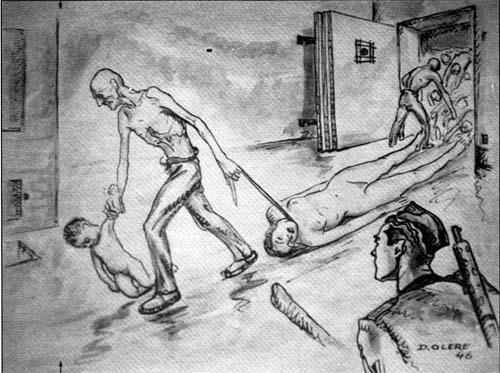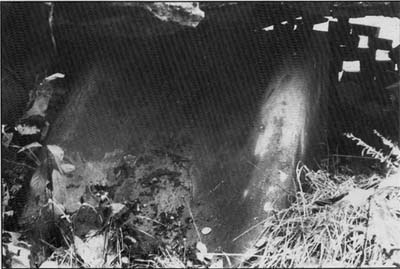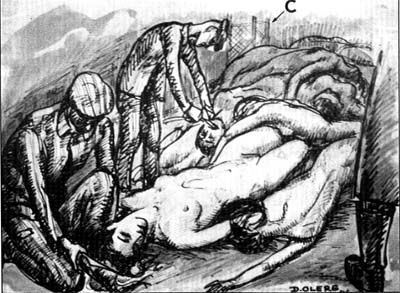 |
Document 29.
|
|
| Document 29. |
| Indian ink sketch by David Olère, dated 1950, showing women and children just before their extermination in the gas chamber of Krematorium III. Leaving aside the emotive aspect, this sketch is TOO LATE to be historically acceptable. It has become allegorical and contains obvious errors that can be identified by comparison with “The extraction of the gassed”, dating from 1946. The gas chamber door is shown opening inwards, whereas in fact it opened outwards. Even the position of the door is incorrect. The lamps are incorrectly placed — they were actually located on either side of the central supporting were beam, which is not even shown. No pillars are visible, either structural or latticed.The faces of the SS men,with their shaved necks, are caricatures as compared with the young “pure bred” SS man with wavy hair shown on the 1946 drawing, and contrast with the angelic faces of the women, the majority of whom are of “Aryan” appearance. according to the criteria of the Third Reich. I present this scene to show how the visual memories of a survivor deteriorate with time. Only Olère’s early pictures, from 1945 to 1947, are historically valid, having the truth of photographs, even if not their absolute precision. Oléres paintings of Birkenau, produced much later, reflect this deterioration of the visual memory. |
|
| Document 30 (sketch) |
 |
| |
Document 30 (sketch) (above) and 30a (photo): (below) |
| Sketch by David Olère, dating from 1946, showing bodies being removed from the Kematorum III gas chamber. As confirmed by known photographs, the door is correcttly hung and located. The fragment of furnace shown on the left, beyond the two arrows, is purely symbolic (there was no furnace in the basement) and spoils a scene which would have been irreproachable without this addition “to make it better”. Between the door and the prisoner in the foreground there was a wall of planking blocking off the corpse chute (still visible in the ruins of Krematorium III. The photo by the author, below the sketch. shows its upper extremity), not used because it was built to serve real morgues, not what had become: an undressing room and gas chamber. The total absence of this chute even in David Olères early memories confirms that it was never used. |
|
 |
Document 30a (photo) |
|
| Document 31 |
 |
|
| Document 31: |
| Sketch by David Olère, dating from 1946, showing a “barber” (in the the Foreground) and “dentist” (in the middleground) at work on bodies INSIDE the Krematorium III gas chamber, as shown by a wire mesh Zyklon B introduction column [C] in the background. It should be noted that the SS probably considered that the extracction of gold teeth should be done immediately on opening the gas chamber in order to avoid the “organized losses” that could occur over the short distance from the basement to the ground floor |
|

